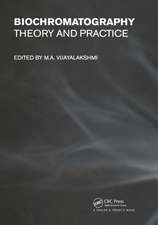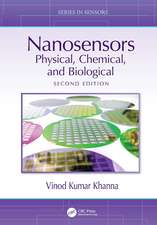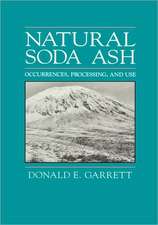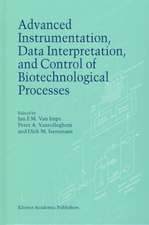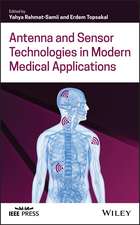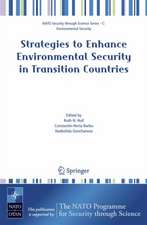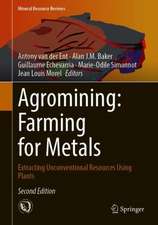Phytoremediation of Metal-Contaminated Soils: NATO Science Series: IV:, cartea 68
Editat de Jean-Louis Morel, Guillaume Echevarria, Nadezhda Goncharovaen Limba Engleză Hardback – 17 mai 2006
| Toate formatele și edițiile | Preț | Express |
|---|---|---|
| Paperback (1) | 1219.77 lei 6-8 săpt. | |
| SPRINGER NETHERLANDS – 16 mai 2006 | 1219.77 lei 6-8 săpt. | |
| Hardback (1) | 1052.02 lei 39-44 zile | |
| SPRINGER NETHERLANDS – 17 mai 2006 | 1052.02 lei 39-44 zile |
Din seria NATO Science Series: IV:
- 18%
 Preț: 1225.94 lei
Preț: 1225.94 lei - 15%
 Preț: 640.06 lei
Preț: 640.06 lei - 18%
 Preț: 953.65 lei
Preț: 953.65 lei - 18%
 Preț: 950.84 lei
Preț: 950.84 lei - 18%
 Preț: 950.96 lei
Preț: 950.96 lei - 18%
 Preț: 948.61 lei
Preț: 948.61 lei - 18%
 Preț: 945.92 lei
Preț: 945.92 lei - 15%
 Preț: 644.63 lei
Preț: 644.63 lei - 18%
 Preț: 945.92 lei
Preț: 945.92 lei -
 Preț: 402.56 lei
Preț: 402.56 lei - 18%
 Preț: 1229.91 lei
Preț: 1229.91 lei - 15%
 Preț: 646.43 lei
Preț: 646.43 lei - 15%
 Preț: 647.08 lei
Preț: 647.08 lei -
 Preț: 394.51 lei
Preț: 394.51 lei - 18%
 Preț: 1230.21 lei
Preț: 1230.21 lei - 15%
 Preț: 657.57 lei
Preț: 657.57 lei - 18%
 Preț: 1835.83 lei
Preț: 1835.83 lei - 18%
 Preț: 1825.12 lei
Preț: 1825.12 lei - 18%
 Preț: 958.73 lei
Preț: 958.73 lei - 18%
 Preț: 951.29 lei
Preț: 951.29 lei - 18%
 Preț: 944.51 lei
Preț: 944.51 lei - 18%
 Preț: 1015.55 lei
Preț: 1015.55 lei - 15%
 Preț: 647.08 lei
Preț: 647.08 lei - 18%
 Preț: 1827.80 lei
Preț: 1827.80 lei - 18%
 Preț: 1835.53 lei
Preț: 1835.53 lei -
 Preț: 395.63 lei
Preț: 395.63 lei - 18%
 Preț: 944.99 lei
Preț: 944.99 lei
Preț: 1052.02 lei
Preț vechi: 1384.24 lei
-24% Nou
Puncte Express: 1578
Preț estimativ în valută:
201.40€ • 210.14$ • 168.82£
201.40€ • 210.14$ • 168.82£
Carte tipărită la comandă
Livrare economică 10-15 martie
Preluare comenzi: 021 569.72.76
Specificații
ISBN-13: 9781402046865
ISBN-10: 1402046863
Pagini: 356
Ilustrații: XI, 346 p.
Dimensiuni: 155 x 235 x 25 mm
Greutate: 0.68 kg
Ediția:2006
Editura: SPRINGER NETHERLANDS
Colecția Springer
Seria NATO Science Series: IV:
Locul publicării:Dordrecht, Netherlands
ISBN-10: 1402046863
Pagini: 356
Ilustrații: XI, 346 p.
Dimensiuni: 155 x 235 x 25 mm
Greutate: 0.68 kg
Ediția:2006
Editura: SPRINGER NETHERLANDS
Colecția Springer
Seria NATO Science Series: IV:
Locul publicării:Dordrecht, Netherlands
Public țintă
ResearchCuprins
Why remediate?.- Hyperaccumulation of trace elements by plants.- Plant accumulation capacity for potentially toxic elements.- Genetically modified plants with improved properties for phytoremediation purposes.- Phytostabilisation of metal-contaminated sites.- Phytomanagement of radioactively contaminated sites.- Phytoremediation ediation of industrially-contaminated sites using trees.- Factors limiting efficiency of phytoextraction at multi-metal contaminated sites.- Litavka river alluvium as a model area heavily polluted with potentially risk elements.- Plant uptake of radiocaesium – potential for remediate radiopolluted soils.- Study of Cd accumulation by Thlas pi Caerulescens under presence of glucuronic acid containing exopolysaccharides.- Sunflower growth and tolerance to arsenic is increased by the rhizospheric bacteria Pseudomonas fluorescens.- Natural zeolites effect on heavy metals immobilization in soil.- The arsenic-phytoremediation potential of genetically modified pseudomonas spp.- Round table discussion: Sustainable Management of Natural Plant Resources for Phytoremediation.- Working group discussion: The Efficiency and Viability of Phytoremediation.
Caracteristici
This book is unique because on the one hand the fundamental aspects of the mechanisms of acquisition, transfer and accumulation of metals in plants are discussed and on the other hand practical approach to prioritizing assessing and remediating significant environmental problems. Several types of phytoremediation are commercially used.

